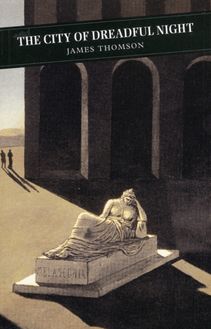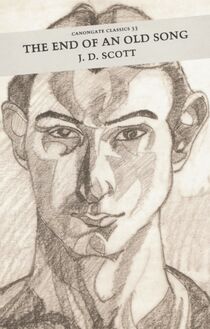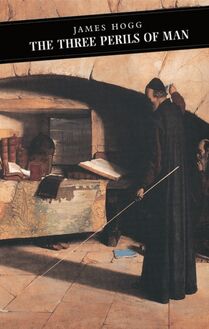Corn King and the Spring Queen , livre ebook
325
pages
English
Ebooks
2010
Vous pourrez modifier la taille du texte de cet ouvrage
Obtenez un accès à la bibliothèque pour le consulter en ligne En savoir plus
Découvre YouScribe et accède à tout notre catalogue !
Découvre YouScribe et accède à tout notre catalogue !
325
pages
English
Ebooks
2010
Vous pourrez modifier la taille du texte de cet ouvrage
Obtenez un accès à la bibliothèque pour le consulter en ligne En savoir plus
Publié par
Date de parution
01 juillet 2010
Nombre de lectures
3
EAN13
9781847675125
Langue
English
Naomi Mitchison
THE CORN KING AND THE SPRING QUEEN
With a new Introduction by the author
Edinburgh • London • New York • Melbourne
to MR. X who went to Outland in a small aeroplane on Wednesday week
Contents
Introduction
Foreword
PART I . Kataleptike Phantasia
II . Philylla and the Grown-ups
III . What Advantageth it Me?
IV . The Patterns of Sparta
V . Up the Ladder and over the Wall
VI . Dream on, who can?
VII . Kings who Die for the People
VIII . Death and Philylla
IX . They that Mourn
Introduction
To write an introduction to a book which has been written some sixty years back is rather like introducing one’s grandmother. So, at least, I suppose I know how my grandchildren might feel. I look at my book, half reluctant, half eager, turning the pages could I really have written that, amn’t I on dangerous ground, trying to assess it? I write differently now, perhaps better, perhaps not. But I know that by now I am a very different person with different ideas of the world, above all writing for a different audience, probably more critical, themselves leading more interesting and varied lives than those readers two generations back. What will the new ones think of this old book?
But then I take a gulp of the old vintage. I find myself remembering, only too well, the moods and problems, but also the delight, of writing this book which you are going to read. But my brain-child has run away; now it belongs to its readers rather than its writer.
Now let us look at the story of this book. It begins to happen somewhere on the edge of the Black Sea. You will not find Marob on any map, but for you and me it is real. The people who lived thereabouts are vaguely called Scythians; one of the few things we know about them is that they made astonishingly beautiful objects, mostly bronze. You can see a few in the main museums of the world, but most and probably the best are in the Hermitage Museum in Leningrad. We judge a civilisation by what its people do, what they think if they put it into writing or speech, but also by what they make. When we look at their artefacts there must be constant interpretation, just as there should be when we do the same with present cultures. Some of these may have been going on for hundreds, perhaps even thousands of years, but have only lately been touched by what we think of as our own superior culture. Yet are we always quite certain of our superiority?
What earlier people thought about, how they dealt with love and hate, joy and disaster is often hard to understand if they are far across the bridges of written or remembered history. Yet, if their remaining artefacts are beautiful across the sea of years, something can be adduced about them, some understanding can be made.
Yet none of this was in my mind when I first made contact with Marob in a sailing boat off Plymouth, watching the waves and not attending to what Julian Huxley was telling me about the minutiae of the ocean population. But it grew into a force behind my writing, page after pencilled page in those notebooks I carried with me and dropped on to floors or into mud and took with me on long, uninterrupted, Underground journeys, sometimes round and round the Circle, totally unaware of my fellow passengers, because I was not really there, but far elsewhere. You might have thought I was worrying about politics or about which shop to go to for something I wanted, or indeed, that I was deep into a love affair. But no, no, I was being one person or another in my book, becoming them in turn as I wrote about them and they seemed to be sitting beside me.
In the late twenties and early thirties, the Cambridge Ancient History was coming out volume by volume. I gobbled them up, even decorating some volumes with pasted-in photographs of buildings or statues. But I had to find out more, I had to get closer, behind the answers to my questions. I got into exchanges with Professor Adcock and some of the other historians who were writing it, above all William Tarn, who seemed to be in tune with my ideas, so that everything he told me fitted in. As often as not I asked questions which they couldn’t answer or only with an additional perhaps , or occasionally a probably . But I think most authors are rather pleased to answer the questions of readers who have clearly absorbed what they are asking about. There were other books of course, including my dear old Golden Bough , and so often but any writer knows this something, a sentence in a book, a tree, the expression of someone passing, a cloud across the moon, will set the instrument ticking. One will grab the nearest pencil and write.
So, over the months, my picture of the edge of what we call civilisation built itself up and beyond that the fuller picture of what was happening in the centres of Mediterranean culture, yet always keeping an eye on what the historians, or, for that matter, the contemporary authors, wanted us to believe. Plutarch, for instance, had very firm ideas of how his biographies should be regarded and what lessons could be learned from them for a later era.
So the pictures gathered and gathered. Something that began with one girl, for the moment myself, playing with little crabs, on a beach but of what sea? who happens to be able to work magic, turned into a whole country and culture of people with, almost touching them, pages of real, admitted history. When this became so pressing that it had to be written down, I got on with it, checking all that could be checked. It became an elaborate, even exhausting, story. Sometimes I turned aside to write something different, or the real world with its pains and anxieties broke in, and the story of the book went dark for a time. But it always came back.
The main picture became clear: how these people who lived on the edge of the real Mediterranean culture, but not too near and with a comforting background of custom and magic to help them with their problems of health and happiness, their food supply and their social habits, came into touch with other ideas, more akin to those we ourselves know. The book follows those who leave Marob and what happened, both to them and to those left behind. As the story gathered and coloured the individual people became more clear to me: the Chief of Marob, his witch-wife and her brother who makes the beautiful things, those bronzes. I saw them struck by another set of ideas and carried away into the last phase of Hellenic culture and into an understanding of the ideas of philosophers and politicians.
Now the story had shifted into the revolution in Sparta, led by the last of the Kings. At the time of writing that seemed very relevant to what was going on in the real world of the early thirties. I would wake from my book to watch these realities and see each in the terms of the other. My book, by this time, was based on real, documented history, but all the same, how we look at history depends on what we want to find. If a bit of historical guessing, even by an accredited historian, did not fit my story, I disregarded it or found holes in it. There are newer historians, even in the unpopular classic stage, who cast a different light on some of my characters.
So, readers, remember that my account of what was happening in Sparta or Athens or even Egypt, is all based on real history, but the view was moulded by what I and many another person was thinking in the Europe of those days, with Mussolini and his fascists in Italy and already the shadow of Hitler in Germany. If I was writing this book now I might treat my characters and my story differently. But I cannot be certain, even of that.
We know certain historical facts, for instance about King Kleomenes of Sparta; the picture of him in this book by this storyteller allows these facts and perhaps throws light on them, and yet may be misleading. We try to imagine what went on in other people’s minds, and what we think they might have said or done, beyond the secure facts. Here and there it is just possible that I may have guessed right. This is the best that an author dealing with real people, either in fiction or biography (and can one draw a complete line between them?) can hope to do.
So my story which I hope you will be following, leaves Marob and the world of magic in which anything can happen, for the Mediterranean civilisation on the way to modern times and modern ideas and religions. Real people take their places in my book: Sphaeros, a known minor philosopher, and then King Kleomenes in Sparta with his wife and children and much that is known about Egypt at that time, and others who are at least names in history books. They were real people with real lives, apart from me and my alien language. But the dead cannot complain if I have got it wrong.
Events really happened, but must have looked different to those who wrote about them, starting with writers much nearer in time than ourselves. So, readers, in this tangle and mirage, good luck to you. Watch what Erif Der and Tarrik the Corn King did for the Plowing and the Harvest and then follow them across the Mediterranean, a big jump towards today. Be with them, and so, with me.
Naomi Mitchison
Foreword
The things in this book happened between the years 228 bc and 187 bc. Some of the things really happened, and some of the oddest things are said to have happened by Plutarch and others who call themselves historians. The place called Marob is not historically real, but people on the shores of the Black Sea, and thereabouts, made very beautiful things, of the kind which Berris Der made. For the rest, I have tried to deduce a place, from a good deal of evidence of actual ideas and happenings in all sorts of other times and places. As between Marob and Sparta or Alexandria, it is very doubtful whether, at a distance of more than two thousand years, one can ever get near to the minds, or even to the detail of the actions, of the people one is writ












